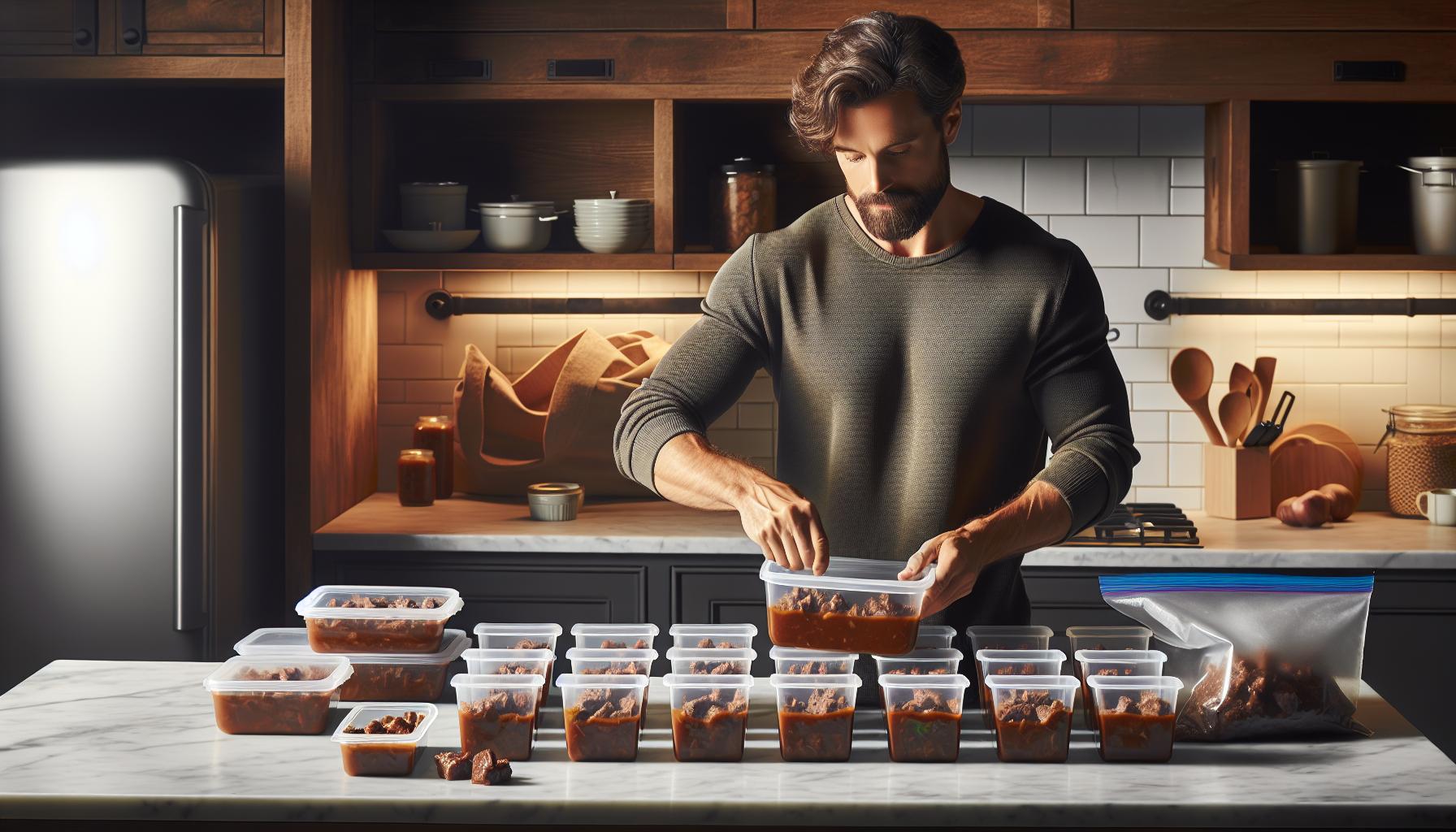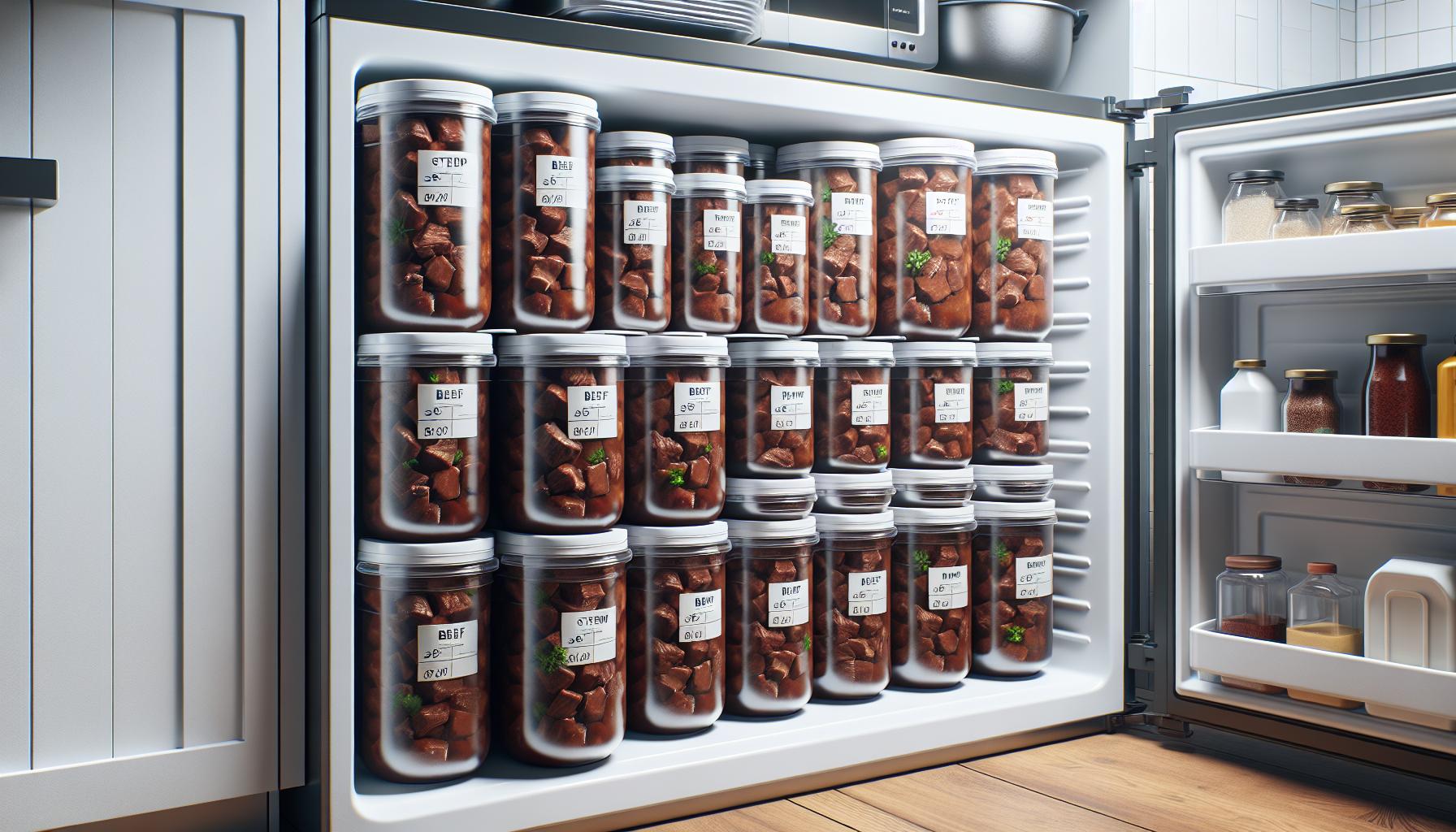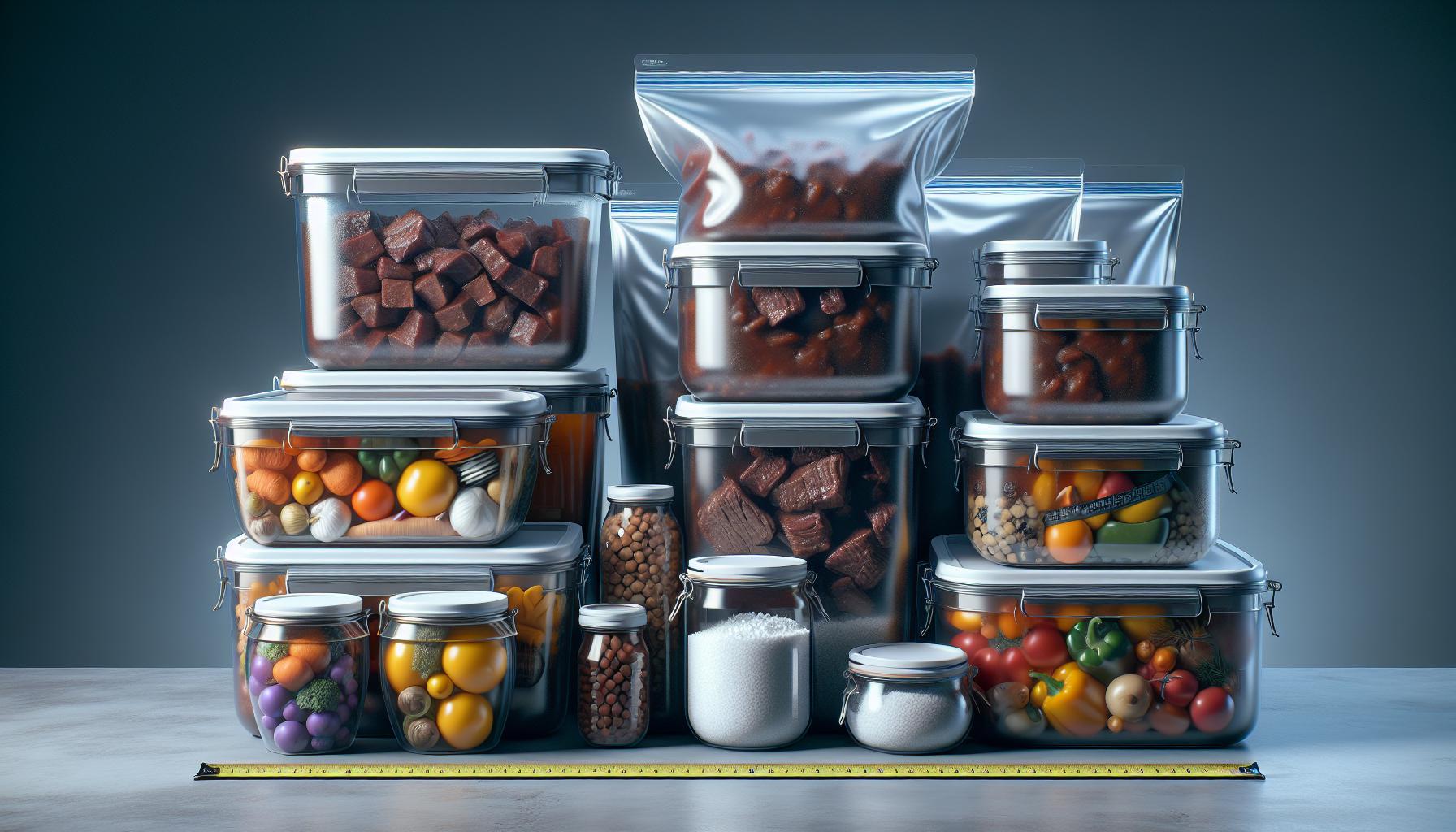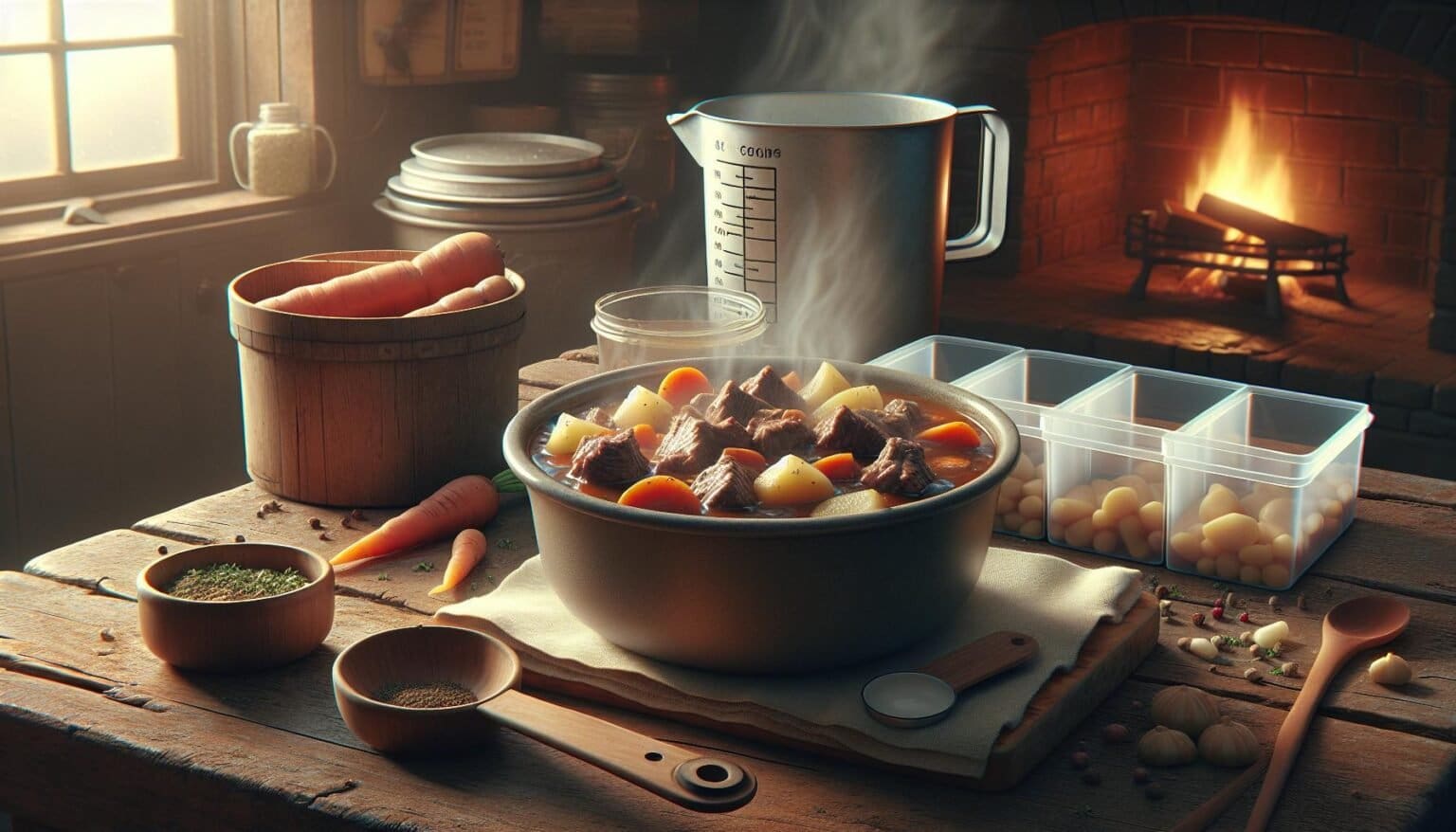Freezing homemade beef stew provides a convenient way to enjoy hearty comfort food without cooking from scratch every time. Proper freezing techniques ensure the stew maintains its flavor texture and nutritional value for several months making it an ideal make-ahead meal for busy families.
Beef stew can be frozen for up to 6 months when stored in airtight containers or freezer bags at 0°F (-18°C). The key to success lies in cooling the stew completely allowing it to reach room temperature before freezing and leaving adequate headspace for expansion.
Understanding the right freezing methods prevents common issues like freezer burn texture changes and flavor loss. Whether preparing large batches for meal prep or preserving leftovers proper storage techniques make the difference between a delicious reheated meal and a disappointing dining experience.
“1. Cool stew completely
Proper cooling of beef stew prevents bacterial growth and maintains optimal texture after freezing. Place the hot stew pot on a heat-resistant surface away from direct heat sources. Leave the stew uncovered at room temperature for 30 minutes to release excess steam.
- Transfer stew to shallow containers for faster cooling
- Stir occasionally to distribute heat evenly
- Use an ice bath to speed up the process
- Check temperature with a food thermometer
The ideal storage temperature is 40°F (4°C) or below. Divide large batches into smaller portions using multiple containers to accelerate cooling. Avoid placing hot stew directly in the refrigerator as it raises the internal temperature affecting other stored foods.
| Cooling Stage | Time | Temperature |
|---|---|---|
| Initial Rest | 30 min | Below 140°F |
| Room Cooling | 1-2 hrs | Below 70°F |
| Final Cooling | 2-3 hrs | Below 40°F |
Remove thickening agents like flour or cornstarch before freezing to prevent separation. These ingredients work better when added during reheating.
2. Portion into serving sizes

Dividing beef stew into portion-sized containers creates convenient frozen meals for future use. A kitchen scale measures precise 1-2 cup portions while measuring cups or ladles work for quick estimation.
Store the portions in:
- Freezer-safe zip-top bags (lay flat to save space)
- Airtight plastic containers with secure lids
- Aluminum foil containers with tight-fitting covers
Leave a 1/2 inch gap at the top of each container to allow for expansion during freezing. Microwave-safe containers simplify reheating straight from frozen.
| Container Type | Portion Size | Storage Time |
|---|---|---|
| Freezer Bags | 1-2 cups | 4-6 months |
| Plastic Containers | 2-3 cups | 3-4 months |
| Aluminum Trays | 3-4 cups | 4-6 months |
Label each portion with:
- Contents
- Date frozen
- Number of servings
- Reheating instructions
Remove excess air from containers before sealing to prevent freezer burn. Stack containers flat in the freezer to maximize space efficiency.
3. Pack in airtight containers

Proper packing prevents freezer burn and maintains the beef stew’s flavor. Freezer-safe containers create an effective barrier against moisture loss and freezer odors. Here’s the essential packing process:
- Fill containers to 1/2 inch below the rim, allowing space for expansion
- Remove air bubbles by gently tapping containers on the counter
- Wipe container rims clean before sealing to ensure an airtight seal
- Press out excess air when using freezer bags
Recommended container options:
| Container Type | Capacity | Best For |
|---|---|---|
| Plastic containers | 2-4 cups | Individual portions |
| Freezer bags | 1-6 cups | Space-saving storage |
| Glass containers | 2-8 cups | Long-term freezing |
Label each container with:
- Contents
- Freezing date
- Portion size
- Reheating instructions
Stack containers flat in the freezer after the stew freezes solid to maximize space efficiency. Place newer containers toward the back to ensure proper rotation of stored meals.
4. Leave ½ inch headspace

Leaving proper headspace protects frozen beef stew from container damage during expansion. The liquid in beef stew expands by 10% when frozen, requiring a ½ inch gap between the stew surface and container lid. This expansion space prevents pressure buildup that cracks containers or bursts freezer bags.
Here’s how to measure proper headspace:
- For plastic containers: Fill to ½ inch below the rim
- For freezer bags: Leave ½ inch after pressing out air
- For glass jars: Keep 1 inch space at top to prevent breakage
- For aluminum containers: Maintain ½ inch gap below lid
Key measurements for headspace:
| Container Type | Required Headspace |
|---|---|
| Plastic | ½ inch |
| Freezer Bags | ½ inch |
| Glass | 1 inch |
| Aluminum | ½ inch |
Overfilling containers leads to messy leaks while underfilling creates excess air space. Press gently on container sides after filling to check for proper expansion room. The stew surface should move slightly when pressed without reaching the lid.
5. Label and freeze up to 6 months”
Label each container with clear and complete information. Write the date of freezing, portion size, and “Beef Stew” on each container using a permanent marker. Store labeled containers in the freezer at 0°F (-18°C) or below.
Storage Duration Chart:
| Container Type | Maximum Storage Time |
|---|---|
| Freezer Bags | 6 months |
| Plastic Containers | 6 months |
| Aluminum Containers | 4 months |
Place containers flat in the freezer until frozen solid. Stack them vertically after freezing to maximize space. Keep newer containers toward the back of the freezer while moving older ones to the front for easy rotation.
Freezer Storage Tips:
- Place containers against the freezer walls for faster freezing
- Maintain consistent freezer temperature
- Store away from foods with strong odors
- Keep freezer at least 75% full for optimal efficiency
- Check seals monthly for secure closure
After 6 months, frozen beef stew loses optimal flavor quality though it remains safe to eat indefinitely at 0°F (-18°C). Monitor freezer temperature using a thermometer to maintain food safety standards.



